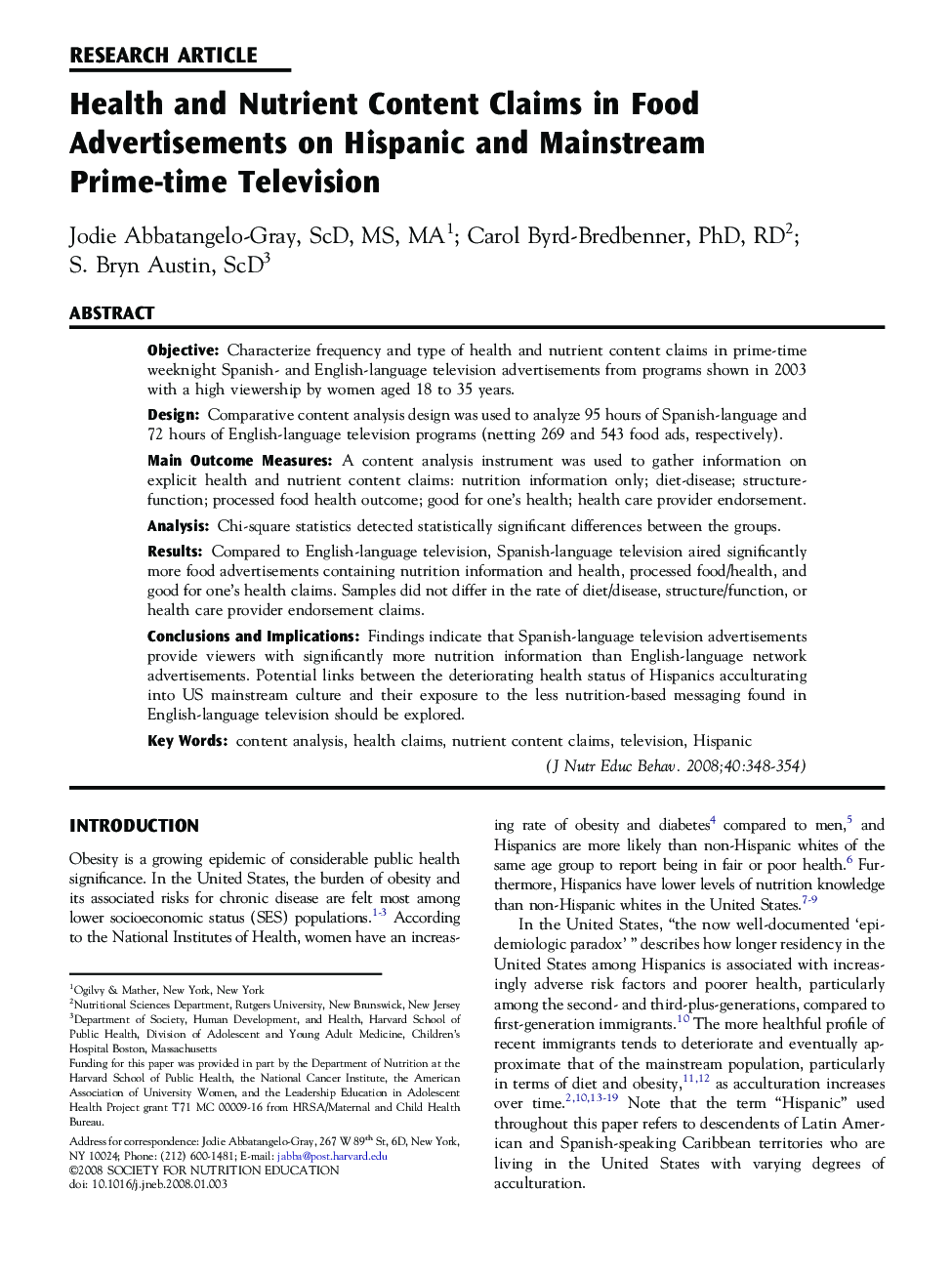| Article ID | Journal | Published Year | Pages | File Type |
|---|---|---|---|---|
| 363170 | Journal of Nutrition Education and Behavior | 2008 | 7 Pages |
ObjectiveCharacterize frequency and type of health and nutrient content claims in prime-time weeknight Spanish- and English-language television advertisements from programs shown in 2003 with a high viewership by women aged 18 to 35 years.DesignComparative content analysis design was used to analyze 95 hours of Spanish-language and 72 hours of English-language television programs (netting 269 and 543 food ads, respectively).Main Outcome MeasuresA content analysis instrument was used to gather information on explicit health and nutrient content claims: nutrition information only; diet-disease; structure-function; processed food health outcome; good for one's health; health care provider endorsement.AnalysisChi-square statistics detected statistically significant differences between the groups.ResultsCompared to English-language television, Spanish-language television aired significantly more food advertisements containing nutrition information and health, processed food/health, and good for one's health claims. Samples did not differ in the rate of diet/disease, structure/function, or health care provider endorsement claims.Conclusions and ImplicationsFindings indicate that Spanish-language television advertisements provide viewers with significantly more nutrition information than English-language network advertisements. Potential links between the deteriorating health status of Hispanics acculturating into US mainstream culture and their exposure to the less nutrition-based messaging found in English-language television should be explored.
